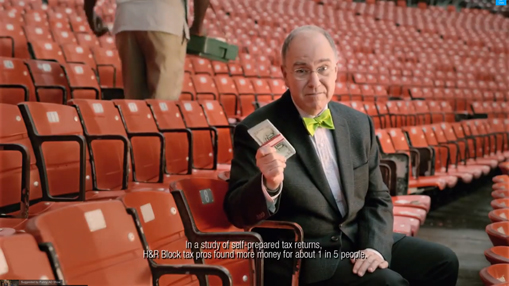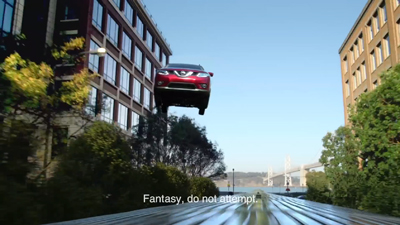Not so long ago, if you came up with a Big Idea – a product, a service…a book or movie, whatever – you also developed some creative marketing to go with it. That way, when you put your Big Idea out into the world, the marketing would (hopefully) entice people into buying it. With persistence and a little luck, your Big Idea might just set the world on fire.
Well, Grandpa, now we have analytics and preference-based marketing. With analytics, marketers can find out what people already want. No guesswork. No inventive ad campaigns required. No waiting for results. Actually, you don’t even need a Big Idea. With analytics, it’s all about selling more of what already has worked in the past.
Creativity? We don’t need no stinkin’ creativity.
Analytics has essentially changed marketing from a creative process to a data-driven process. If you’re unfamiliar with how analytics works, here’s the short story: vast pools of consumer data are compiled and analyzed to discover purchasing patterns. Some patterns are actual – the stuff you’ve downloaded from iTunes over the past year, your age, sex and income, whether you’ve contributed to a political campaign. Other patterns are predictive…for instance, what certain marketers think you might want to download from iTunes next week. These patterns form profiles which tell marketers all about you and the particular group of “people like you.”
Marketers use profiles to tailor their advertising to what’s potentially most effective on “people like you.” There’s nothing wrong with that – good intel has always been a cornerstone of successful marketing. But more often than not, strategy and creativity is compromised and exchanged for the singular goal of duplicating repetition.
If “duplicating repetition” sounds redundant, it is. The same messages are repeated, over and over, in order to duplicate the same transactions, again and again. The primary objective of analytics, then, is not simply to predict your next purchase, but to influence it. Not only that, it’s manipulation (word carefully chosen) orchestrated in real time – as you walk through a store, drive past a billboard, watch TV or update your Facebook page – all before you have time to pause and consider.
You say you like the Twilight movies? Great! Here’s more stuff other Twihards, Twilighters and Fanpires just like you have bought. It’s brilliant. Almost like Minority Report, except with less violence. And happily, no Tom Cruise.
Easy money?
Whether it’s analytics, customer surveys – or my personal pet peeve, focus groups – there’s always plenty of data to support what’s worked before, and little to justify taking a risk.
Analytics proves that boosting repeat sales or pulling transactions from a less-than-saturated market can be a low-risk, high-reward approach. This is how my cat Mingus operates: why go to all the trouble of hunting for a fresh tasty mouse in the back yard when there’s a perfectly good hamburger left unattended on the dinner table?
By comparison, old-fashioned marketing is a dicey proposition. Creative ideas actually have to be good. They have to excite and convince people. And their success is based on what people might do next week or next month. With analytics, the real-time numbers never lie. And should the results ever be off, it’s those fickle consumers’ fault, not the data’s.
If you’re betting the farm on next quarter’s sales, the attractiveness of analytics is understandable. There’s big money to be made identifying, manipulating and exploiting purchasing patterns. (Table. Hamburger. Yum.)
Some guy named Steve Jobs, ‘tho, preferred to have a Big Idea or two in the can:
“It’s really hard to design products by focus groups. A lot of times, people don’t know what they want until you show it to them. That doesn’t mean we don’t listen to customers, but it’s hard for them to tell you what they want when they’ve never seen anything remotely like it.” – Steve Jobs
I had no idea what an iPod was before I saw one. Or an iPhone, or an iPad. No one did. But as soon as I saw one, I had to have it.
Think hard about this. One minute, you have no clue what the product is or why you need it. The next, you can’t live without it.
This is how Big ideas work. They hit the scene – without prediction – and the world changes.
The Tyranny of Expectations
As a tactical intel-gathering tool, analytics can be very useful. Do our clients use analytics? You bet. But no tactic, no matter how impressive, is a substitute for a creative strategy.
Tactical methodologies like analytics reinforce what we call the Tyranny of Expectations – the belief that history will repeat itself, exactly and precisely.
When overconfidence in expectations shifts our focus to probabilities at the exclusion of possibilities, there is no room for new ideas…no chance for surprises, no time for contemplating “What if?”
The Tyranny of Expectations explains why we have a Kodak “shocked” that people no longer needed photographic film. A Postal Service that “underestimated” email. A Radio Shack that realized a decades late that it needed to “reinvent” itself. (Where else can you still buy a pager?)
Every 18 months or so, the power of technology doubles and its size halves. Play this out 20 years forward and you have computing power at the cellular level. What will that do to customer buying habits? How will we respond to products and industries that are years from being invented? What value will today’s view of the consumer have? My first-generation iPod is in the bottom of a closet with my CD burner, so I’m betting “not much.”
Analytics cannot predict a market’s perpetually accelerating evolution. It cannot forecast consumer response to a new, exciting Big Idea.
Which brings us back to Twilight. Stephanie Meyer hit the motherlode with her girl-loves-blood-sucker novels. Much like Harry Potter creator JK Rowling, she never published a piece of fiction before she wrote Twilight in 2003. Love it or hate it (I’m in the latter group), Twilight was a monster Big idea – a new and untested commodity from an unknown creator. And it’s made about $3.5 billion to date. Not bad.
More telling is that the movie industry – a pioneer in aggressive market optimization, predictive modeling, grassroots social media campaigns and, yes, market analytics – is no better off for its advanced tactics. Post Bella and Edward, Hollywood threw a host of Twilightized features to a ready-made fan base, including Beautiful Creatures, Mortal Instruments, I Am Number Four and Red Riding Hood. Each should have raked in the cash, or so the analytics clearly predicted. All failed miserably.
Another Big Idea filled our need for something new: The Hunger Games.














